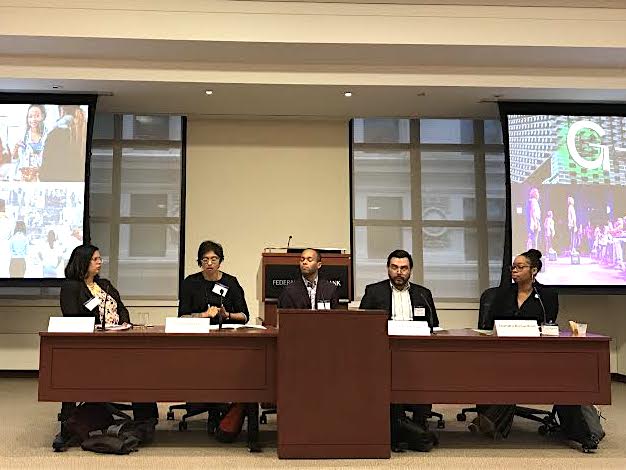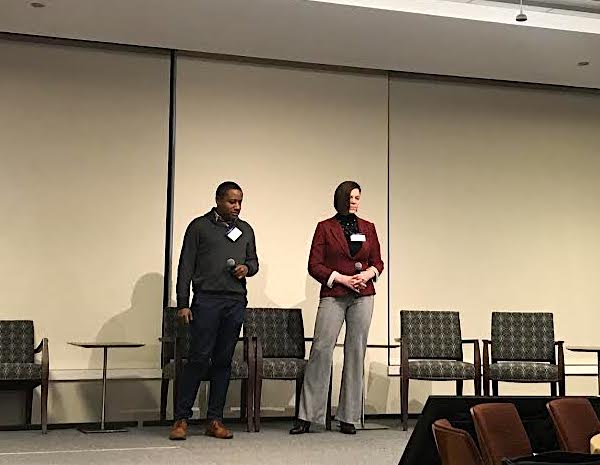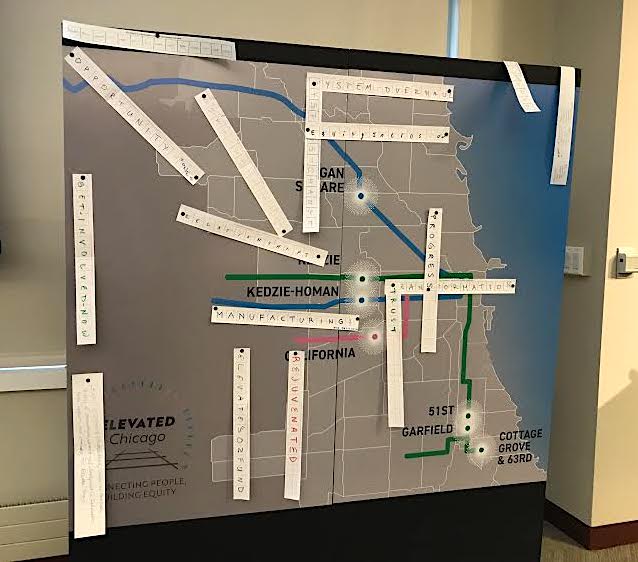Transit-oriented development in Chicago often inspires conversations about equity, not because of its current iteration, but because its potential. In our city TOD has become nearly synonymous with upscale development. But when new housing is built near transit, it should create opportunities for residents of various income levels, not just affluent people. Instead, Chicago's TOD boom has often been associated with rising rents and the displacement of lower-income and working-class people of color, especially along the Milwaukee Avenue corridor in gentrifying Logan Square and Wicker Park. For TOD to be equitable, the planning must address issues of economic and racial justice.
Elevated Chicago is an organization seeking to inspire intersectional conversations about TOD. Launched in 2017, Elevated Chicago is a collaborative comprised of 17 partners, including business, governmental, and nonprofit organizations with a goal of addressing displacement though equitable TOD. It aims to concentrate investments within its "eHubs," half-mile radius circles around seven CTA stations, located in four different parts fo town. The stations include three stops on the Green Line's South Side branch, two stops on the Green and Blue Lines on the West Side, The California Pink Line station and the Logan Square Blue Line stop.

This past Thursday, over 200 representatives of Elevated partner groups and other residents attended the Elevated Chicago Symposium, a discussion of equitable TOD (eTOD)-related work, challenges, and solutions. The summit was also an opportunity for community partners in each eHub to give presentations on their initiatives and the issues they've encountered.
Jennie Fronczak from LUCHA and Aaron Johnson from Center for Changing Lives presented on their work around the Logan Square Blue Line eHub. A major success they touted was securing a community benefits agreement with Blue Star Properties for its future hotel and restaurant at the old Grace’s Furniture Building, next door to one of the Logan Square station entrances. Under the CBA, 75 percent of jobs will be full-time and pay $17 an hour, and will go to local residents. Every six months, the developer has to report back to community groups to make sure the CBA is being honored.

Adrienne Lange from Latinos Progresando and Omar Magana of OPEN Center for the Arts gave a presentation on the California Pink Line station eHub. One of the successes Lange highlighted was the future conversion of an old library in Little Village into an immigrant resource and community space. In addition to that, the Marshall Square Resource Network organized a walkability study last year to collect data on the conditions for pedestrians in Little Village. Magana also discussed how art is being used to help create community.
Kevin Sutton of the Foundation for Homan Square and Mike Tomas of the Garfield Community Council gave a presentation on the Kedzie Corridor eHub. One of the challenges Tomas mentioned was the declining African-American population around the Kedzie Green Line stop, which touches on Elevated Chicago’s goal of addressing displacement triggered by gentrification, and also displacement caused by disinvestment. Citywide, Chicago's Black population has been falling, a phenomenon some have labeled a reverse Great Migration.
Tomas discussed his experiences attending housing court to help residents dealing with foreclosures or evictions, which also had the goal of preventing future building demolitions in the neighborhood. There are also efforts to help community members grow their own food, as there are no grocery stores in the area near the station. One major success Tomas mentioned was the CBA reached with The Hatchery, a new business incubator next to the Kedzie Green Line stop. The CBA includes an agreement to ensure residents can access the kitchen space and jobs within the incubator.
The last presenters were Ghian Foreman of the Washington Park Development Group and Leslé Honoré of the K.L.E.O. Community Family Life Center. Foreman talked about the challenges of working around three CTA train stations (the 51st, Garfield, and 63rd Green Line stops) because of the different dynamics of the area surrounding each station. “It’s giving us an opportunity to plan for the future,” Foreman said.
A series of other presenters throughout the day discussed eTOD from the lenses of "people, places, and process," which are the central workplan themes of Elevated Chicago. The event ended with the opening reception for “Undesign the Redline,” an interactive exhibit at the Money Museum at the Federal Reserve Bank of Chicago that discusses the history of redlining and other forms of of housing discrimination.
![]()
Did you appreciate this post? Consider making a donation through our PublicGood site.





